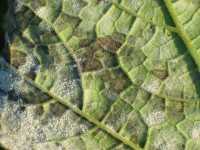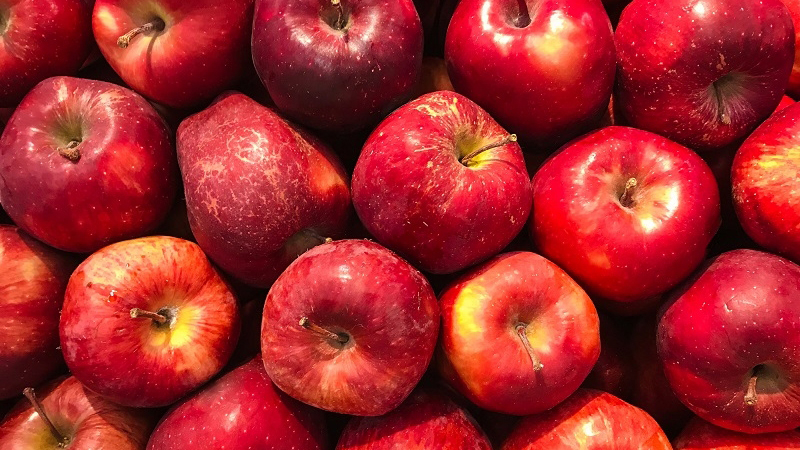Mildew Control In Organic Cucurbits

Editor’s Note: McGrath is in the Department of Plant Pathology and Plant-Microbe Biology at Cornell University.
MANAGING diseases is an important component of successful production of melons, squashes, cucumbers, and other cucurbit crops for organic and conventional growers. Unfortunately, many diseases plague these crops. Two important diseases, powdery mildew and downy mildew, cannot be avoided because the pathogens produce wind-dispersed spores capable of moving long distances. Occurrence of other diseases is typically more variable, depending on the presence of the pathogen (many survive between crops) and favorability of conditions.
New management tools for organic growers include resistant varieties, biopesticides, and a spore exclusion tunnel. The list of melon varieties resistant to powdery mildew continues to grow. In addition, cucumber varieties with a new source of resistance to downy mildew are on the way.
Research in New York has shown that complete control of downy mildew can be achieved by growing cucumbers in low and high tunnels set up with a low-cost air filtration system with allergen filters to trap spores. The system was designed and tested by Lou Lego at his farm, Elderberry Pond Farm in Auburn, NY. He uses the cucurbit downy mildew forecast program on his farm, which can be accessed at http://cdm.ipmpipe.org, to decide when to turn on the system.
New Tools
Several new biopesticides are helping to manage soil-borne as well as foliar pathogens for growers producing organically as well as conventionally.
● Double Nickel 55 (Bacillus amyloliquefaciens strain D747) is labeled to apply to soil for damping-off and vine decline and to foliage for downy mildew, gummy stem blight, and powdery mildew.
● Serenade Soil (Bacillus subtilis strain QST 713) is a new formulation for soil application. This bacterium colonizes roots and produces compounds that affect pathogens directly and triggers metabolic pathways to activate the plant’s natural defenses and modulate growth. It is labeled for diseases caused by Rhizoctonia, Pythium, Fusarium, Verticillium, and Phytophthora.
● Regalia (5% extract of Reynoutria sachalinensis) is now labeled to permit application in transplant water or as a soil drench, which might be more effective than applying to foliage. The product boosts the plants’ natural defense mechanism against certain fungal and bacterial diseases and is labeled for Anthracnose, downy mildew, gummy stem blight, Phytophthora blight, and powdery mildew in cucurbits.
Powdery Mildew Control Options
This disease is managed with resistant varieties and fungicides. An integrated program with both management tools is needed to achieve effective control. Additionally it is more difficult for new pathogen races or strains to develop when an integrated program is used.
There are resistant varieties in most crop groups with new varieties released most years. With melons, first find out what races occur in the area from state Extension specialists. Melons with resistance to pathogen races 1 and 2 provided good suppression of powdery mildew? when evaluated on Long Island in 2012. Many types of resistant melons are now available.
Be sure to select squash and pumpkins with resistance from both parents (homozygous resistance), when possible. The term homozygous resistance is used in a few seed company catalogs whereas others use terms like “high resistance” and “intermediate resistance” to generally refer to homozygous and heterozygous resistance, respectively.
The degree of disease suppression obtained with a variety also depends on modifying genes present. Resistant squash and pumpkin varieties have not provided as effective control in recent years as before, but they remain an important tool. Plant breeders are actively searching for new sources of resistance to powdery mildew.
Powdery mildew can be managed more effectively with organic fungicides than downy mildew. Many different products are available for growers to chose from that contain a large diversity of active ingredients, including botanical oils (such as sesame, rosemary, and thyme oil), mineral oil, potassium bicarbonate, biocontrol organisms (such as Bacillus and Streptomyces species), a plant extract (giant knotweed), copper, and sulfur.
The Trouble With Downy
Downy mildew is primarily managed with fungicides. Resistance was the main tool for cucumbers until a new strain of the pathogen appeared.
Since 2004, varieties with this resistance, which include most hybrids, have provided some suppression of the new pathogen strains present, but substantially less than what was achieved against strains present before 2004. However, these resistant varieties are still considered a worthwhile component of an IPM program. Fortunately, cucumber varieties with new genes for resistance are being developed.
How to Manage Mildew Diseases
Cornell University’s Margaret T. McGrath offers four tips
on how to effectively manage mildews — powdery and downy — in cucurbits.
1. Select resistant varieties.
2. Sign up to receive alerts about downy mildew occurrence and routinely check the forecast website, http://cdm.ipmpipe.org, to know where the disease is occurring and what crops are affected.
3. Inspect crops routinely for symptoms, beginning at the start of crop development for downy mildew and fruit development for powdery mildew. Make sure to look at the underside of older leaves for signs (spores) of the pathogens. Early in the day is the best time to find spores of the downy mildew pathogen, which are only produced on the leaf underside.
4. Apply fungicides weekly starting at the very first symptoms and when there is a risk of downy mildew for the specific crop based on the forecasting program. Diseased plants cannot be cured, therefore it is critical to success to start treatment early.
Additionally, growers who have sustained significant losses to downy mildew in the past ought to consider producing some of their crop in a spore exclusion tunnel.










